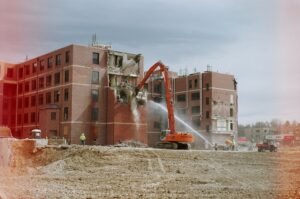Many factors can damage your roof, including severe heat and moisture. Prevention goes a long way in keeping your roof in good condition and reducing the chance of major damage during harsh weather.
Extreme wind can also cause serious problems to your roof. The damage could include ripped shingles, weakened wooden beams, or water seepage.
Preparation
Many preventive measures can be taken to protect a roof against harsh weather conditions. Storm-resistant shingles, yearly inspections and cleanings, trimming nearby trees, and caulking gaps around chimneys, vents, and skylights can all provide an extra layer of protection against strong winds, heavy rains, and snowstorms.
It’s also important to clear gutters and drainage areas of debris to minimize the potential for water damage caused by standing water or excess moisture. Also, keeping a log of any problems encountered during inspections will help homeowners recognize and address issues before they worsen.
Large swings in temperature can also take their toll on commercial roofs. Hot temperatures cause roofing materials to soften, while the freeze-thaw cycle of winter causes ice buildup and strains surfaces. Proper insulation helps minimize internal temperature changes to protect roofs from deterioration. It’s also essential to have the right protective coatings installed in your residential roofing to prevent damage from hail and other projectiles.
Emergency Preparedness
Many roofing materials are vulnerable to severe weather damage. Metal roofs, however, can withstand high winds and electrical storms better than asphalt or tile shingles. Metal roofs also allow rain and water to drain much more easily, which reduces the likelihood of standing water that could cause long-term damage.
Property owners can minimize damage by developing a disaster response plan. This should include communication protocols, identifying responsible personnel, and implementing prompt response procedures. It should also involve educating building occupants and tenants so they know what to do in an emergency, such as seeking shelter in designated areas or avoiding certain property sections.
Property owners can also protect their commercial roofing by applying a protective coating. This can be done in various ways, such as painting or spraying. Additionally, it is important to trim trees and remove debris that may be blown onto the roof by strong winds. Finally, ensuring gutters are secure can be very helpful in protecting the roof from flooding.
Repairs
In areas prone to seasonal hurricanes, other high-speed weather events and other extreme weather conditions, regularly performing maintenance and inspections on your roof is particularly important. These preventative measures will minimize damage and save you money in the long run.
Regularly inspecting the granule level on shingles and any other signs of wear or deterioration can help determine whether your roof needs repairs before stormy weather hits. It is also necessary to ensure that gutters and drain outlets are not blocked, which can lead to ponding problems.
Also, ensuring that skylights and chimneys are properly secured can protect them from water damage. The flashing around these fixtures can become corroded over time and cause leaks. Removing combustible material near roofs and checking that trees are healthy and properly trimmed can also reduce fire risk during extreme weather conditions. Lastly, applying a protective coating can provide added protection from damage caused by severe winds.
Insurance
Even with careful care and regular maintenance, your roof will eventually deteriorate due to natural wear and tear. Investing in home or commercial property insurance is a good idea to protect against severe damage caused by extreme weather conditions.
If you have a standard homeowners’ insurance policy, your house is protected against unforeseen circumstances, such as hail and storm damage, provided you have the proper coverage. You can increase your range to account for replacement cost value or actual cash value, but this will change your premium.
Many insurance companies offer incentives for upgrading a roof which exceeds building codes and standards designed to withstand harsh weather conditions better. This may also lower your insurance premium. It is important to have routine inspections to detect and address early signs of wear that may not be obvious to the untrained eye. This will help prevent problems that could disrupt business operations or result in costly repairs.









